The two finalists in a U.S. Army innovation challenge to craft concepts for a new futuristic precision grenade launcher have now publicly shown their designs. The service has been exploring options for years for a highly computerized 30mm Precision Grenadier System (PGS) that soldiers could use to engage targets ranging from enemy personnel behind cover to light armored vehicles to drones in the sky. This all follows the cancellation of work on the advanced 25mm XM25 grenade launcher, nicknamed “The Punisher,” back in 2018.
Barrett Firearms, best known for its .50 caliber M82-series rifles, together with MARS, Inc., showed off a model at the Association of the U.S. Army’s (AUSA) main annual conference last month of what they are currently calling the Squad Support Rifle System (SSRS). FN America, the U.S.-based subsidiary of famed Belgian small arms company Fabrique National, had displayed a model of its PGS-001 design at last year’s AUSA gathering. The SSRS and the FN PGS-001 were the designs to come out on top of the Army’s xTechSoldier Lethality challenge to “showcase their innovative concepts for a Precision Grenadier System” last year.

In its current form, the SSRS weighs nearly 14 pounds, is just under 34 inches long, and fires 30x42mm projectiles from a five-round box magazine. True to its name, it has the general outward look of an oversized rifle, including a pistol grip, trigger assembly, and fire control selector switch that all mimic the ones found on AR-15/M16-series guns.
The SSRS also has an attachment rail for optics and other accessories on top. The SSRS model at AUSA was fitted with a Vortex Optics XM157, a variable 1-8×30 optic with a digital display overlay and other advanced features like a built-in laser rangefinder. The XM157 is set to be the standard optic for the Army’s new 6.8mm XM7 rifles and XM250 squad automatic weapons from Sig Sauer.
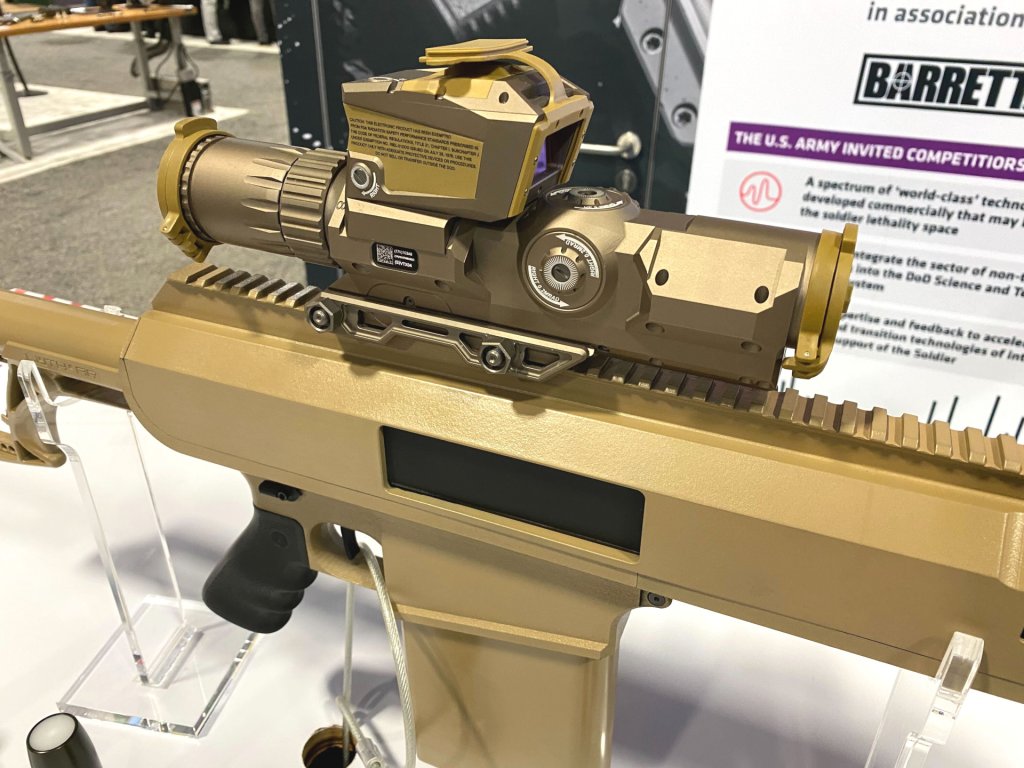
In terms of ammunition, Barrett had mockups of nine different rounds on display at AUSA, including high-explosive, incendiary, armor-piercing, and dedicated training types. There was also a “close quarters battle” (CQB) shell, which looks to be a buckshot-like canister round.
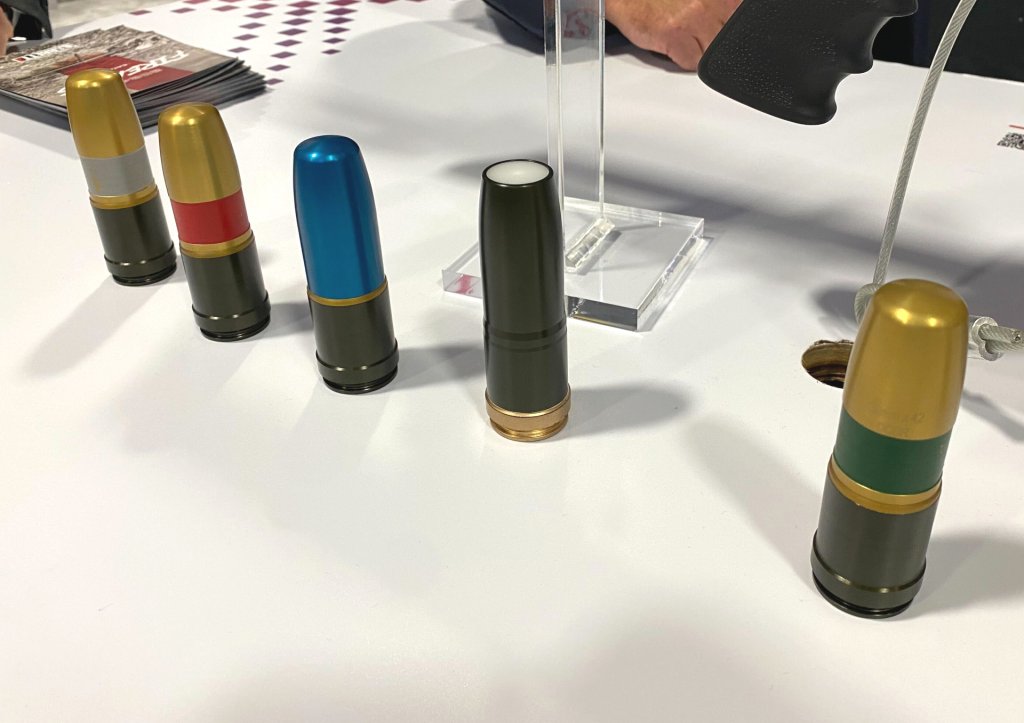

Specific details about the PGS-001 are more limited, but it has a roughly similar layout to the SRSS and was also previously shown with an XM157 optic installed. A prominent difference between the two is the notably large muzzle brake on FN’s design. This would help mitigate recoil, especially when firing multiple shots in succession, but also create significant blast, flash, and noise.
FN does not appear to have displayed ammunition types along with the PGS-001 at the 2023 AUSA convention.
In past PGS contracting notices, the Army has called for a family of ammunition that includes a “Counter Defilade Round” that can “precisely and quickly defeat personnel targets” behind cover, which would be an air-bursting design, as well as armor-piercing, CQB, and training types. A dedicated Counter Unmanned Aerial System (UAS) shell of some kind has also been on the PGS requirements list.
Other previously stated PGS requirements include an overall length of 34 inches or less, a maximum weight of no more than 14.5 pounds, and an effective range of at least 1,640 feet (500 meters).
“The PGS will be a man portable integrated weapon system that enables precision engagements to destroy personnel targets in defilade and in the open with increased lethality and precision compared to the legacy M203/M320 grenade launchers,” according to one contracting notice from February 2023. “The PGS will provide overmatch to comparable threat grenade launchers in near peer formations in future operating environments (jungle, urban, woodland, subterranean, desert, day/night/obscured). The PGS is envisioned to consist of a weapon, a fire control, and a suite of ammunition which enables the user to engage targets in defilade/cover, hovering UAS targets, conduct door breaching, engage close combat targets, and light armored targets.”
The M203 and M320 mentioned here are both single-shot 40x46mm grenade launchers, which the Army primarily fields as under-barrel attachments for existing M16/M4-series guns. The M320 can also be employed in a stand-alone configuration. The maximum effective range of the M203 and M320 when firing typical high-explosive rounds is 1,148 and 1,312 feet (350 and 400 meters), respectively.
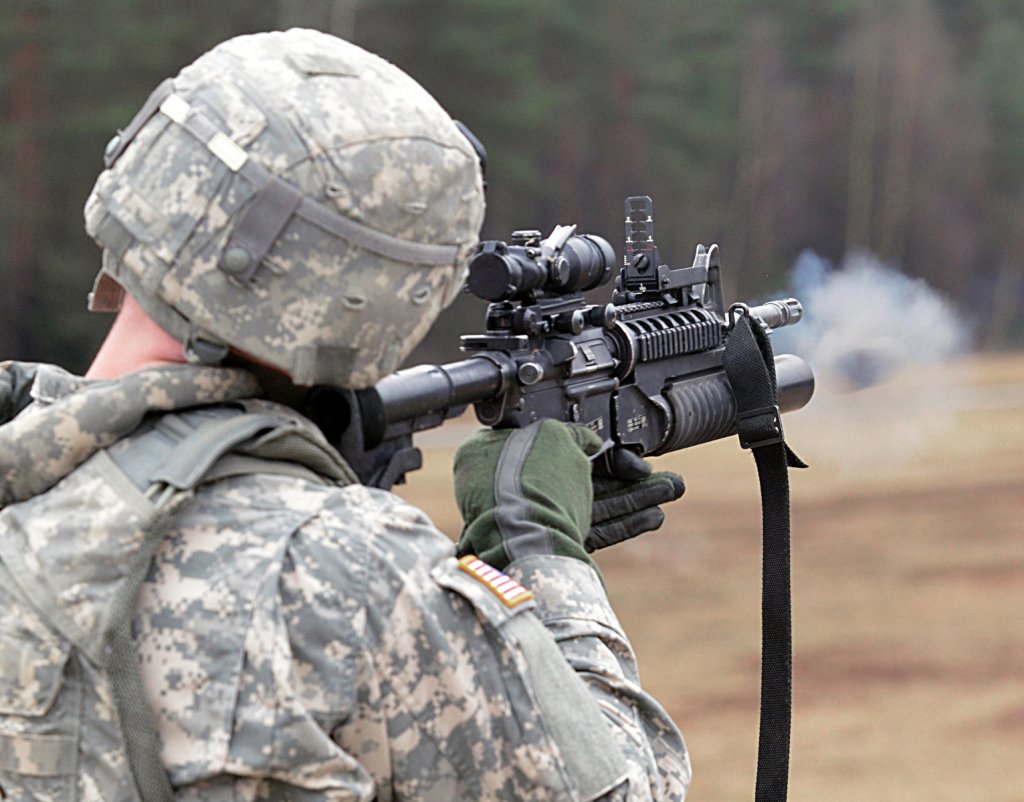
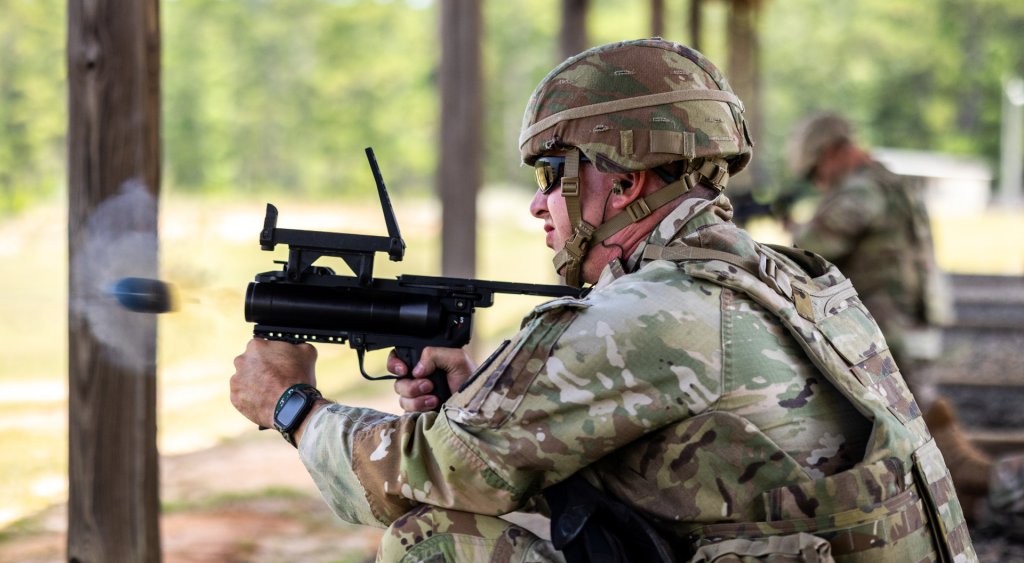
As already noted, this is not the first time the Army has sought such a weapon. The core operational needs behind the PGS are extremely similar to the ones that drove the development of a 25mm advanced grenade launcher, designated the XM25, and known variously as the Individual Semi-Automatic Airburst System (ISAAS) or Counter-Defilade Target Engagement (CDTE) System between the mid-2000s and the late 2010s. Also nicknamed “The Punisher,” the XM25 had grown out of an earlier next-generation infantry weapons program called the Objective Infantry Combat Weapon (OICW) that started in the 1990s.
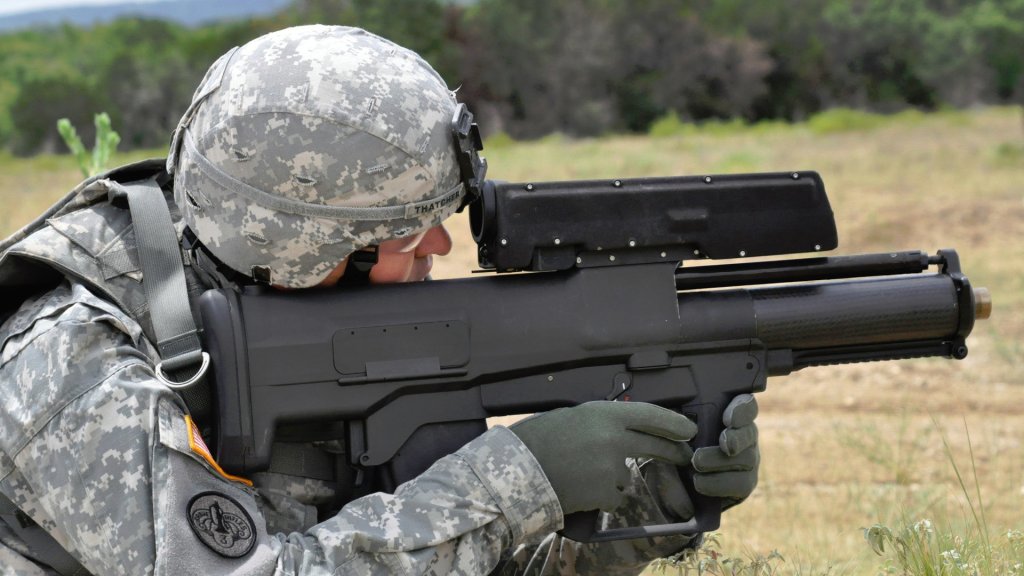
Interestingly, given the stated PGS requirements to date, the XM25’s 14-pound weight was cited as a contributing factor in its ultimate cancellation, along with the weapon’s physic bulk and its cost (as well as that of its advanced programmable ammunition).

A 2018 report from Stars and Stripes quoted an Army spokesperson as saying the service had secured the rights to the XM25’s technical data package (TDP), as well as prototypes and ammunition, which in turn prompted questions about whether the service might reboot its development.
“The Government does not own the XM25 TDP” and “PGS development will start from scratch but will incorporate lessons learned from the XM25 CDTE program wherever possible,” the Army said in response to questions taken at a 2021 virtual industry day event.
While the SSRS and PGS-001 clearly look now to be the front-runners in any final PGS competition, there is still a possibility that the Army could consider other designs, even including losing entries from the xTechSoldier Lethality challenge. American Rheinmetall Munitions, Knight Technical Solutions (not to be confused with Knight’s Armament Company), and Plumb Precision Products had also submitted designs for xTechSoldier Lethality, details about which are limited. We do know Knight Technical Solutions’ Multipurpose Intelligent Grenade System (MIGS) is a six-shot revolver-type design intended to go under the barrel of existing infantry rifles like the M203 and the M320, while Plumb Precision Products’ P3-M110 is another rifle-like weapon, but chambered to fire 17.5mm rounds. It is unclear whether American Rheinmetall’s entry, called the Squad Support Weapon Achieving Precision Grenadier System Objectives, is related to the 40x46mm Squad Support Weapon 40 (SSW40) from its German parent company.
Regardless, the Army clearly has a continued interest in a precision grenade launcher capable of engaging a variety of target types, especially ones behind cover, precisely and at extended ranges compared to the M203 and M320. The service has also explored improved 40mm ammunition types, including air-bursting rounds, to help meet these operational demands.
The inclusion of a counter-drone round in the planned PGS ammunition family also underscores the growing threat posed by drones and similarly increasing demand for ways to neutralize them across the U.S. military. For the PGS effort, the counter-drone requirement is something that predates, but has also now been completely validated by the ongoing war in Ukraine, which has helped fully drive the dangers posed by uncrewed aerial systems into the mainstream consciousness.
Overall, no matter what design it might ultimately pick for PGS, the Army looks to be aiming to finally succeed where “The “Punisher” failed.
Contact the author: joe@twz.com
